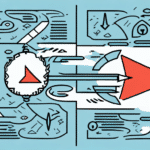Importance of Customer Retention
In the competitive landscape of 2023, customer retention has become a cornerstone of sustainable business success. Retaining existing customers is not only more cost-effective than acquiring new ones but also fosters a loyal customer base that can drive long-term revenue growth.
Cost of Acquisition vs. Retention
Acquiring new customers can be significantly more expensive than retaining existing ones. According to a Harvard Business Review study, increasing customer retention rates by just 5% can boost profits by 25% to 95%. This stark difference underscores the financial advantage of focusing on retention strategies.
Building Trust and Loyalty
Trust is the foundation of customer loyalty. By consistently delivering quality products and exceptional customer service, businesses can cultivate strong, enduring relationships with their customers. Loyal customers are more likely to make repeat purchases and advocate for the brand within their networks.
Positive Word-of-Mouth Marketing
Satisfied customers are a powerful marketing tool. They are more inclined to share their positive experiences with friends and family, leading to organic growth without additional marketing expenditures. Conversely, negative experiences can quickly spread, damaging the brand's reputation and deterring potential customers.
Measuring Customer Retention
Understanding and measuring customer retention is essential for optimizing strategies and driving improvements. Key metrics provide insights into customer behavior and the effectiveness of retention efforts.
Key Metrics
- Customer Churn Rate: The percentage of customers who stop using your product or service over a given period.
- Customer Lifetime Value (CLV): The total revenue a business can expect from a single customer account throughout the business relationship.
- Repeat Customer Rate: The percentage of customers who make more than one purchase.
- Net Promoter Score (NPS): A measure of customer satisfaction and loyalty based on their likelihood to recommend your business to others.
Measuring ROI
To evaluate the effectiveness of retention strategies, businesses must measure the return on investment (ROI). This involves analyzing metrics such as total customer spend, repeat purchase rates, and CLV. Tools like CRM software can aid in tracking these metrics accurately.
Tools and Technologies
Advancements in technology have provided businesses with sophisticated tools to enhance customer retention. Customer Relationship Management (CRM) systems, automated email marketing platforms, and data analytics tools enable personalized interactions and streamlined communication with customers.
Strategies to Improve Customer Retention
Implementing effective retention strategies can significantly enhance customer satisfaction and loyalty. Below are some proven methods to boost retention rates:
Exceptional Customer Service
Providing prompt and effective customer service is paramount. Addressing inquiries and resolving issues swiftly demonstrates a commitment to customer satisfaction, fostering trust and loyalty.
Personalization
Personalizing the customer experience through tailored recommendations and targeted marketing can make customers feel valued. Utilizing data analytics to understand customer preferences allows businesses to deliver more relevant and engaging interactions.
Loyalty Programs
Implementing loyalty programs incentivizes repeat business. Rewards, discounts, and exclusive offers can encourage customers to continue choosing your brand over competitors.
Customer Feedback
Soliciting and acting upon customer feedback is crucial for continuous improvement. By understanding customer needs and addressing their concerns, businesses can enhance their offerings and retain their customer base.
Community Building
Creating a sense of community around your brand through social media engagement, online forums, or in-person events can strengthen customer relationships. A loyal community fosters brand advocacy and repeat business.
Ongoing Education and Support
Providing educational resources such as webinars, tutorials, and training sessions helps customers maximize the value of your products or services. Ongoing support builds confidence and satisfaction, leading to increased retention.
The Role of Technology and Trends
Staying abreast of technological advancements and emerging trends is vital for maintaining high customer retention rates. Leveraging modern tools and adapting to new methodologies can provide a competitive edge.
Personalization with AI
Artificial Intelligence (AI) enables advanced personalization by analyzing large datasets to predict customer behavior and preferences. AI-powered chatbots and recommendation engines can enhance the customer experience by providing timely and relevant interactions.
Social Media Engagement
Social media platforms offer unique opportunities for customer engagement. By actively interacting with customers on these channels, businesses can build stronger relationships and address issues in real-time.
Future Predictions
- Increased utilization of AI and machine learning for deeper personalization.
- Greater emphasis on building emotional connections with customers.
- Integration of augmented and virtual reality to enhance the customer experience.
- Expanded use of messaging apps for instant and personalized customer interactions.
Embracing these trends will enable businesses to stay ahead of the curve and continually improve their retention strategies.
Common Mistakes and Best Practices
Avoiding common pitfalls and adhering to best practices can significantly impact the success of customer retention efforts.
Common Mistakes to Avoid
- Ignoring Customer Feedback: Failing to listen and respond to customer feedback can lead to dissatisfaction and attrition.
- Over-Promising: Making unrealistic promises about products or services can erode trust if not fulfilled.
- Short-Term Focus: Concentrating solely on immediate retention goals without considering long-term relationships can be detrimental.
- Poor Data Analysis: Not regularly analyzing customer data to refine strategies can result in ineffective retention efforts.
Best Practices for Communication
- Regular Check-Ins: Consistently engaging with customers to ensure their satisfaction and address any issues promptly.
- Prompt Responses: Timely and professional replies to inquiries and concerns demonstrate reliability and commitment.
- Multi-Channel Communication: Utilizing various channels such as email, social media, and phone to reach customers effectively.
- Personalized Messaging: Tailoring communication to individual customer preferences enhances engagement and loyalty.
Implementing these best practices fosters a positive customer experience, encouraging repeat business and long-term loyalty.
Real-World Examples and Case Studies
Examining successful customer retention strategies implemented by leading companies provides valuable insights and inspiration.
Southwest Airlines
Southwest Airlines boasts a highly effective loyalty program that rewards customers for repeat purchases. Their focus on customer service and consistent engagement has cultivated a loyal customer base, contributing to their ongoing success.
Starbucks
Starbucks leverages customer data to offer personalized promotions and streamline the ordering experience. Their rewards program and emphasis on customer personalization have significantly boosted retention rates.
By analyzing these case studies, businesses can adapt and implement similar strategies tailored to their specific needs and market dynamics.
Final Thoughts
Customer retention remains a critical component of any successful business strategy in 2023 and beyond. By prioritizing the satisfaction and loyalty of existing customers, businesses can enhance their brand reputation, increase revenue, and secure long-term success. Implementing the strategies and best practices outlined in this article will enable businesses to develop effective customer retention programs that drive sustained growth and profitability.






















